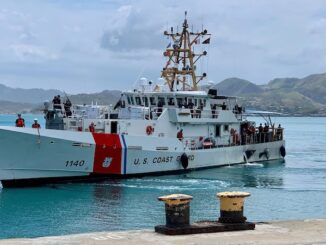
Former Defence Minister Wayne Mapp forecasts a decline in NZDF deployments over the next three years, and less money to spend. For the time being, he writes, deployments and spending should be targeted closer to home.
The final withdrawal of NZDF personnel from Afghanistan will take place this May. By then New Zealand will have fewer NZDF personnel on overseas deployment than at any time over the last 25 years. It is therefore timely to look ahead for the next three years, being the current term of this government.
The next three years is likely to be a time of minimal deployments overseas, and also a time of relatively modest defence procurements. Let’s look at each of these in turn.
Over the next three years there will be a lot spoken and written about the rise of China’s military power. However, China’s rise will not affect NZDF deployments. It is unlikely that New Zealand will join the freedom of navigation exercises in the South China Sea.
Other than regular freedom of navigation exercises, China and US tensions will not result in major new deployments in the region, except for a possible build-up of US air and naval assets on their existing bases in Guam and the Northern Marianas.
Although there is already much talk about the military threat to Taiwan, the actual prospects of an invasion are minimal. China does not have the military capability, neither do they have any real incentive to do so. The risks vastly outweigh the gains. Any action, at least within the next five to ten years, will be little more than sabre rattling.
What else could happen that will engage New Zealand?
The situation in the Middle East is unlikely to get worse, certainly not on the scale of the last 20 years. More likely it will remain similar to the present, or in fact, improve. It is likely that Iran-US relations will get better as the US rejoins the Iranian nuclear deal. In that case, the NZDF is unlikely to be further engaged in Middle East Affairs.
This leaves two scenarios. The first being continuing instability in the Sahel region. New Zealand might contribute a small number of forces under UN auspices. The other scenario is continuing climate and natural disasters in the South Pacific. These tend to be dealt with as they arise and from out of New Zealand.
The South Pacific may well be the forcing issue for the NZDF. Since international deployments outside of the South Pacific are unlikely, there will be an incentive for the NZDF to build skills that are relevant to HADR. There will be opportunities for HADR deployments to provide permanent benefits for the host nations, particularly civil infrastructure for the more remote South Pacific Islands. For instance, an airfield for Tokelau.
There will also be opportunities in New Zealand for the NZDF to expand the range of things they do. The Limited Service Volunteers (LSV) provides military style training to young people who gain from adventurous activity undertaken within a disciplined environment.
The LSV concept could be expanded so it reaches a wider group. Courses could be shortened but reach deeper into the community, particularly for young people who would never have access to the wide range of activities that military style training can offer.
Defence procurement is likely to be much more limited over the next three years compared to the last three years. The previous Minister, Ron Mark, succeeded in replacing both the C130s and the P3s of the RNZAF. The new aircraft will cost more than $4 billion. Such largesse will not be available in this term of government.
The impact of Covid on government debt levels will be sufficient of itself to prevent such large purchases.
However, the core equipment of the NZDF is not getting any younger. The frigates are approaching 25 years in service. Both have had major upgrades, and they will be expected to remain in service till 2035, when the oldest, HMNZS Te Mana, will be 38 years old. The Offshore Patrol Vessels (OPV) will also be over 25 years old in 2035.
Planning for their replacement needs to get under way now with actual contracts being let around 2025.
In my last column I argued that the replacement of the frigates and the OPVs, need not be done on a like for like basis, and that combat capable frigates may not be the most suitable ships for New Zealand. It is not only a question of cost; it is also an issue of utility.
The Canadian Navy and Coast Guard are acquiring eight Arctic capable Harry DeWolf class OPVs of 6,600 tonnes at a unit cost of C$600 million, which is virtually the same in New Zealand dollars. These are versatile vessels with helicopters and landing craft.
If it was decided that the principal theatre of operations for the RNZN should be the South Pacific, extending from the Antarctic to the Equator, then capable OPVs may be more useful than frigates.
Four vessels of the Harry DeWolf class of OPV could be acquired for the same price as the four P8 Poseidon maritime patrol aircraft. The purchase price could be spread over a longer period than the aircraft purchase. The build cycle of the Canadian ship builders would mean the first of the New Zealand vessels would not start till 2028. A substantial amount of the work could be contracted to New Zealand companies.
Each defence minister has the opportunity to make his or her mark on the portfolio. In these more constrained times, the choices may be more difficult than for previous defence ministers. However, there are some real opportunities for Peeni Henare, though he may need to think more widely than his predecessors needed to do.









